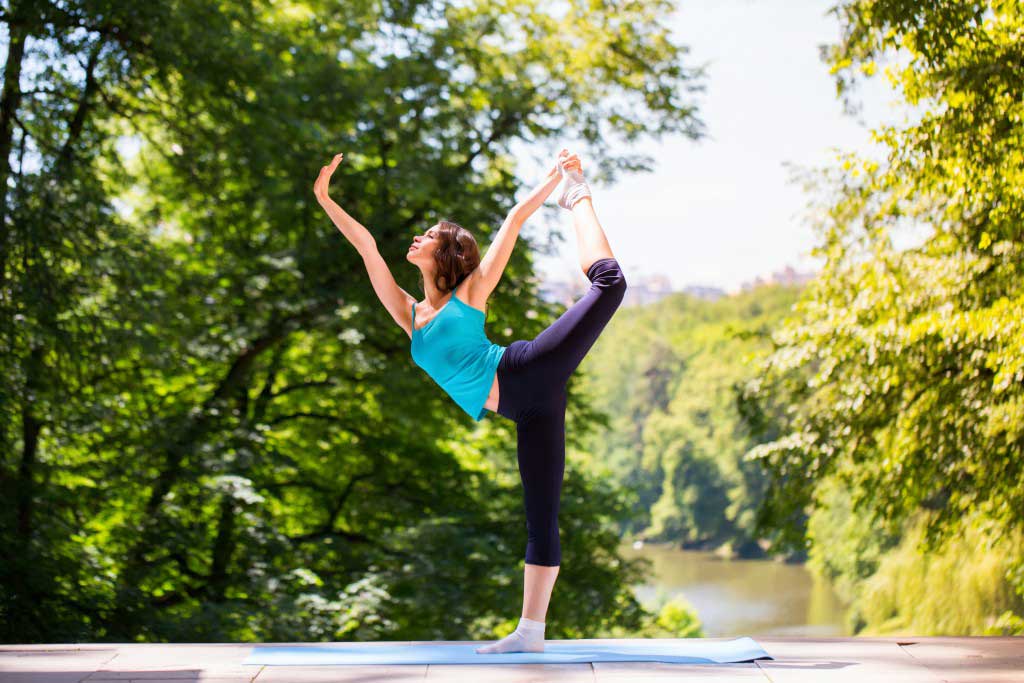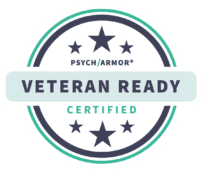By Cristina Utti MA, MFA
According to the U.S. Department of Health and Human Services, more than 22 million Americans struggle with substance abuse, and that number is on the rise. The National Institute on Drug Abuse estimates that this costs the public more than $484 billion a year. Even for those who seek and get help, the relapse rate is high. This is why many drug treatment facilities and addiction specialists are turning to yoga as a supplement to 12-step programs. Twelve step programs such as AA, NA, and the like, focus on emotional, social, and psychological recovery. But, even the founders of AA knew the connection to the body is important. They wrote, “But we are sure that our bodies were sickened as well. In our belief, any picture of the alcoholic which leaves out this physical factor is incomplete.”
The word ‘yoga’ means union. Essentially, it is the term for union with self and a supreme being. Yoga has been practiced in the East for a very long time and began gaining popularity in the U.S in the 1960’s as a way to get high without using drugs. People who battle addiction problems are often in disconnect with themselves and their spirituality. They lose focus of who they are and become unable to connect with their emotions. Addiction is often called a disease of relationships because it is an ailment of being disconnected with others and self. Most people use substances to self-medicate because they are at dis-ease and seeking something to put them at ease, something magical to make them feel better. Practicing yoga is the natural way to bring ease back to the self and reconnect the mind, body, and spirit.
Eastern religions and philosophies see suffering as part of the human condition, and all suffering stems from attachment. Rolf Gates, master yoga teacher and addictions counselor, explains it as such: “In the Western medical model, addiction is treated as something out of the ordinary. In the Eastern approach to suffering, attachment to the pleasant and aversion to the unpleasant is seen as a constant, and so addiction is just an extreme manifestation of an ordinary attachment to the pleasant and aversion to the unpleasant.” The Western approach usually begins addiction treatment with cognitive behavioral therapy, which supports learning and practicing new behaviors. The Eastern approach looks to the cause of the suffering and also supports practicing new behaviors. The approaches to healing are almost the same.
Twelve-step programs mention that the addicted person has suffered a spiritual malady. Incorporating yoga into one’s life provides a reconnection with the spirit, regardless of one’s religious denomination or beliefs. There are many types of yoga, which may be confusing for beginners.
In “A Beginner’s Guide to 8 Major Styles of Yoga“, Kate Hanley describes each of the following styles:
Anusara
Anusara yoga is relatively new in the yoga world. It was developed by John Friend in 1997, based on the belief that we are all filled with an intrinsic goodness. Students are guided to express themselves through poses to their fullest ability.
Ashtanga
Ashtanga is based on ancient yoga teachings. It is rigorous and follows a specific sequence of poses, linking every movement to breath. This yoga moves rapidly, flowing from one pose to the next with each inhale and exhale. It is physically demanding.
Bikram
In Bikram yoga, the room temperature is held at 105 degrees. There is a series of 26 poses, and it always follows the same sequence. This type of yoga is also referred to as ‘hot yoga’ and is becoming extremely popular. It is a good way to sweat out toxins.
Hatha
Hatha is the term for physical yoga practice. It is one of the six branches of yoga. If a class is marked as Hatha, it is generally an introduction to the basic yoga poses.
Hot Yoga
Hot yoga is basically the same thing as Bikram yoga. The sequence of postures slightly differs from Bikram. The room is heated, so expect to sweat.
Iyengar
Iyengar yoga uses props to get one into a precise alignment. There is not a lot of movement in this type of yoga, it is more about holding a stance or posture.
Restorative
Restorative yoga uses props so that students do not have to exert a lot of energy to get into the poses. It is a soft, rejuvenating yoga with five simple poses.
Vinyasa
Vinyasa is also labeled as power yoga. It is known for its flowing movements and intense practice. Music is often played to keep things lively. It is very aerobic and does not stick to the same sequences every time.
Below are some poses that you can begin on your own. All you need is some comfortable clothing and a mat. Remember to honor your body and focus on your breathing. If you cannot fully get into one of the poses, only go as far as your body will allow.
1. Vajrasana (Sitting Mountain), variation
Benefits: Opens the heart and invites stillness into the body.
Affirmation: Serenity comes when I surrender.
Kneel on the floor. Sit back on your heels so that your back is upright. You can put a pillow under your buttocks or knees for padding in order to be comfortable in the position; if you cannot kneel, sit on a chair so that your spine remains straight rather than hunched over. Relax your shoulders. Keep your chest open. Breathe deeply and slowly to help you relax the body and mind. Imagine that you are firmly planted like a mountain, energy going up your spine, feeling strong and serene.
2. Balasana (Child’s Pose)
Benefits: Releases tension in the shoulders and spine and relieves mental fatigue. Encourages feelings of safety and protection, as though you were in a womb of healing energy.
Affirmation: I rest in trust and patience.
Begin in Sitting Mountain Pose, sitting on your feet with your toes touching and your heels separated. Inhale.
As you exhale, gently lower your head to the floor in front of your knees. Place your hands, palms up, next to your feet. Completely relax the neck and shoulders. Hold this position while breathing for 5 minutes or as long as you are comfortable. Use pillows or bolsters for support under your torso or forehead if you have a tight lower back or stiff hips, knees, or ankles.
3. Paschimottanasana (Seated Forward Bend)
Benefits: Helps stretch the hamstrings and lower back. It also fosters a sense of calm and letting go, while gently stretching the spine.
Affirmation: I move forward with patience.
Sit on the floor with your legs extended in front of you. If it’s difficult to sit up straight, sit on a firm cushion or block. Sit up straight and rotate your ankles, flexing and stretching them. Keeping your feet flexed, inhale and lift your arms above your head. As you exhale, bend at the hips and lower your chest toward your knees. Keep your spine straight as you do this. Place your hands on your thighs, calves, ankles, or feet, wherever you can comfortably reach. Hold the pose for 10 breaths.
4. Baddha Konasana (Butterfly)
Benefits: Gently opens the pelvis and hips.
Affirmation: My spirit is as gentle as a butterfly.
Sit up straight, on a bolster or block as needed. Bring the bottoms of your feet together, pulling them in toward your groin. Your knees should be out to the sides so your legs are like a butterfly’s wings. Inhale. As you exhale, lean forward. Clasp your feet and begin pressing your forearms into your upper thighs, gently inviting your legs toward the floor. Breathe.
5. Viparita Karani (Legs-up-the-Wall Pose)
Benefits: Relaxes the legs and feet by relieving pressure.
Affirmation: As I relax, I gain insight, clarity, and ease.
Sit on the floor next to a wall, with your knees bent and your left hip and side barely touching the wall. Using your hands for support, slowly lie back and swivel your hips so that you can slide both legs up the wall and press your buttocks against it. You can let your arms relax either at your sides or on your belly.
Straighten your legs. (If you have tight hamstrings, bend your knees or move your buttocks farther away from the wall.) Hold the pose and breathe. You can place a pillow under your head or lower back for more support.
6. Apanasana (Little Boat Hugging Knees)
Benefits: Releases the lower back and lengthens the spine.
Affirmation: I hold myself with compassion.
Lie on your back and bring your knees in toward your chest. Wrap your arms around your knees and legs, hugging them toward you. Keep your chin slightly tucked so your neck stays long on the floor.
Hold the position and breathe.
7. Jathara Parivartanasana (Knee-Hug Spinal Twist)
Benefits: Releases the lower back and lengthens the spine. Increases flexibility of the spine, back, and ribs.
Affirmation: Everywhere I turn I see beauty.
Lie on your back and hug your knees into your chest. Keep your knees bent into your chest and place your arms out to your sides. Your palms can be up or down, whichever feels most comfortable to you. Inhale. As you exhale, move your hips and knees to the left as you turn your head to the right. Hold the position and breathe. When you are ready, do a gentle spinal twist to the other side.
8. Savasana (Corpse Pose)
Benefits: This basic pose of relaxation is done at the end of each hatha yoga session. It helps relieve the body of tension. It relaxes, rejuvenates, and replenishes the mind and body.
Affirmation: I allow myself to relax completely and surrender to my Higher Power.
Lie on your back and gently close your eyes. Place your feet and legs slightly apart.
Place your arms along the sides of your body with your palms facing up. Make sure your teeth are slightly parted so that your jaw is relaxed. Start taking some deep breaths. Lie absolutely still. Close your eyes, take deep breaths, and let healing energy restore any areas of the body or mind that have been depleted by stress or tension. Visualize healing energy flowing through your entire body. Relax your body, quiet your mind, and soothe your soul. Stay in this position for up to 20 minutes.
Incorporating yoga into daily routine is both restorative and mindful. Studies have shown that those in recovery who practice yoga are less likely to relapse. Give it a try! You have all to gain, and nothing to lose.
References:












